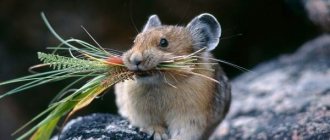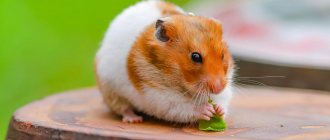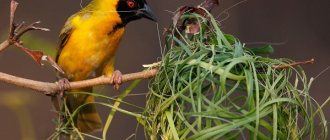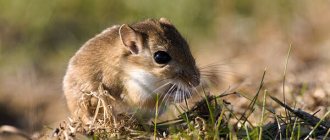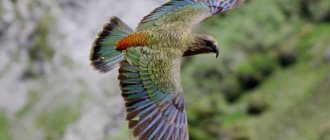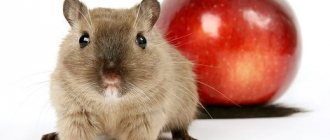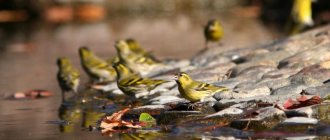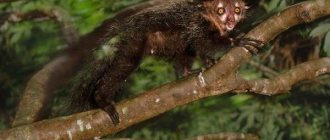The Djungarian hamster is one of the most popular types of domestic hamsters in Europe and Asia (Americans keep them quite rarely). The international name is Sungur (Phodopus sungorus). The name “Dzungarian” itself comes from the name of the region in China.
The rodent belongs to the family of hamsters, the genus of hairy legs. The genus was named so because of the vegetation on the “feet” of the dzhungarik.
They live in Western Siberia, Mongolia, Kazakhstan, and northwestern China, from where they were brought to almost all countries of the continent.
Classic coloring of dzhungarika.
Where do Djungarian hamsters live in the wild?
The homeland of the animal is Asia, Siberia, Kazakhstan. In their natural habitat, Djungarians prefer to settle in deserts, dry steppes, and less often in forest-steppes. Therefore, Djungarian hamsters can be found in eastern Kazakhstan, North-East China and Mongolia.
The habitat of Djungarian hamsters in Russia is Western Siberia, areas of southern Transbaikalia, Tuva, in the Minusinsk, Aginsk and Chui steppes. It is also found in the Altai Mountains at an altitude of 2 to 4 thousand meters above sea level. Hamsters prefer to settle in undeveloped territories, but they are also tolerant of being close to people.
The home of Djungarian hamsters is underground burrows, the depth of which can reach 1 meter. It can be used to distinguish the sex and age of the jungar. In young males they are small and shallow, in females they are much larger, in adult and strong males they are the largest. The burrows of Djungarian hamsters have a large number of branches, several holes and chambers, which are used for storage rooms, bedrooms and latrines.
Description
Djungarian hamsters are small animals of the hamster family, the genus Hairy-footed. The body is covered with short, light gray fur. A darker stripe runs along the back; this is how Djungarian hamsters are usually recognized.
The paws are also covered with hair, but white. In clean pets they are a pleasant white-pink color. The ears are small and round. The beady eyes are slightly protruding. The body is small. The body length of an adult dwarf is 10 cm.
What do Djungarian hamsters eat in the wild?
There is a common misconception that Djungarian hamsters feed exclusively on herbaceous plants. In fact, they are practically omnivores. The food is varied. In the wild, animals often hunt insects (grasshoppers, locusts, ants, caterpillars, moths, worms).
Animals also eat berries, young shoots of trees, foliage and roots of plants, seeds and grains. In search of food, these small animals are able to walk many kilometers.
Djungarians like to stock up for the winter. One individual is able to accumulate up to 20 kilograms of grains and seeds. And sometimes hamsters hide up to 90 kg in their burrows. Hamsters like to live close to people's houses, so vegetables from gardens appear on their menu. But they spoil quickly, so to replenish their supplies, hamsters often go into barns in search of grain.
Habitat and lifestyle
In nature, animals live in steppes and semi-deserts. They live alone, uniting only during mating. The burrows have several “rooms” with different purposes: storage room, bedroom, toilet. They feed on seeds, grasses, and insects.
All this leads to the following content features:
- They need to be housed separately, otherwise expect conflicts and injuries
- Steppe hamsters do not like to bathe at all, it is better to give them a sand bath (read more about washing hamsters here)
- The house should be spacious
Keep in mind that the Djungarian hamster is a nocturnal animal. During the day he sleeps, and towards evening he begins an active lifestyle.
The character of the Djungarians, despite their “selfishness” in nature, is quite mild. This type of hamster is the easiest to train to handle, and they even enjoy being gently petted.
Let me sleep, it's day outside!
Natural enemies
Like any wild animal, the Djungarian hamster has its enemies. Since hamsters live mainly in semi-deserts and steppes, their main enemies are birds of prey. During the day they are hunted by hawks and other representatives of this family, and at night by owls and eagle owls.
For rodents living in forest-steppes, terrestrial predators pose a particular danger: foxes, wolves, lynxes, stoats, badgers, martens, ferrets and sables. Also dangerous for Djungarians are cats and hunting dogs, which often attack hamsters that settle near populated areas.
Djungarian hamsters are saved from sudden attacks by predators because of their excellent hearing. If the sound is not loud, then the dwarf will run to hide in its burrow house or other secluded place. If the sound is clear and loud, and there is no way to hide, then the hamster freezes in place, hoping to remain unnoticed. In the case when this method does not work, the jungarik stands on its hind legs, takes a frightening pose and makes aggressive sounds.
This method helps to protect yourself. He can also use his sharp teeth and claws when fighting an opponent. Moreover, this applies not only to predators, but also to rival hamsters: if one of these wanders into someone else’s territory, he will immediately receive the first warning.
Moreover, sharp sounds are designed not only to scare away enemies, but also to notify relatives of the danger that has arisen. This feature has led to the nickname “singing hamsters” being assigned to the animals.
Djungarians are small, vulnerable creatures, but nature itself took care of their protection. She awarded the hamsters of this species with a fur coat that blends with the environment; even in winter, the animals molt and replace their fur with white. In English they are called winter white dwarf hamsters.
So all predators taken together cannot destroy Djungarian hamsters as a species; they only manage to contain the number of small fluffy creatures.
What do you need for feeding?
You should put a ball or vacuum drinker in the cage. The water needs to be changed every day for fresh water. You should not put a bowl of water in the cage. A Djungarian hamster can get wet in it, freeze and get sick. To accustom your hamster to a ball drinker, at first you can smear its spout with cucumber.
Since almost all Djungarian hamsters, which are widely distributed as pets, have an admixture of Campbell's hamster blood, Djungarian hamsters are also prone to diabetes. Only purebred Djungarian hamsters do not have this tendency, which are very difficult to acquire. Therefore, to prevent the disease, vegetables and fruits that contain a lot of sugar should be excluded from the rodent’s diet. These include: carrots, pumpkin, apples, peach, strawberries, raspberries, etc.
Don't give corn. There should be two feeders in the cage: one for dry food and the other for wet food. Dry balanced food can be bought in stores. Preference should be given only to high-quality, expensive food recommended by breeders. Cheap feeds are often unbalanced.
Lifestyle
Adult Djungarian hamsters prefer to live alone. Unlike home conditions, in the wild the Djungarians are forced to get their own food. Therefore, these animals are characterized by constant competition for territory, food, and females. Djungarian hamsters are fearless; an adult male can attack another animal whose size is many times larger than his own.
Djungarian hamsters usually lead a twilight or nocturnal lifestyle. During daylight hours, animals rest deep underground in their burrows, and at nightfall they come out to look for something to eat.
Djungarians spend most of their short life preparing food supplies. Using subcutaneous pouches on the side of the body, hamsters drag all their supplies into the burrow so that they can eat at any time.
This type of hamster does not hibernate in winter, however, its appearance changes: if the temperature stays below 16 degrees Celsius for a long time, then the animal’s fur becomes noticeably lighter. In preparation for winter, the hamster not only stores up food for future use, but also grows fat.
A persistent decrease in temperature of 10 degrees requires large energy expenditures from hamsters, causing dwarfs to fall into torpor, reducing body temperature to 20°C (the so-called torpor phenomenon). Moreover, this condition occurs in animals not only from cold, but also from stress.
Kinds
As a result of selection, Djungarian hamsters with different colors and types of coat were bred.
Standard color
The back is gray-brown, with a dark stripe that runs from the head and tail. The belly and paws are white or light gray.
Pearl color
- Tarantula spider
- 34 facts about lions
- Lynx
- 37 facts about cheetahs
- Scolopendra
- 32 facts about tigers
This is a white Djungarian hamster. There is often a dark stripe on the back, although the color may be solid. With age, hamsters are able to change the brightness of their color: lighten or, on the contrary, become darker.
Mandarin
The body is orange, with a dark brown stripe on the back.
Campbell
Previously, the Campbell's hamster was considered one of the varieties of Djungarian hamsters. It turned out that these are still different species that are capable of producing hybrids. practically no different from Campbell. The only differences are in the structure of the fur: the Campbellbell hamster’s fur is disheveled and sticks out in different directions, while the Djungarian hamster’s fur is soft and smooth.
Reproduction
The lifespan of a dzhungarika in nature is much shorter than at home. And no wonder, any foray out of the hole fills the animal’s day with stress and worry. In the wild, danger awaits animals at almost every turn; this can include death during hunting, illness and injury, hunger due to lack of food. Therefore, the lifespan rarely exceeds 2 years, while hamsters at home often live up to 3-4 years.
As for the breeding of dwarfs, the season lasts from early May to mid-October. During one such period, a female can give birth to offspring from 2 to 4 times. Pregnancy lasts about 20 days. One individual can have from 5 to 12 cubs. Feeling that the baby is weak and cannot survive, the female eats it.
Children grow up very quickly: after a week the hamsters have fur, after 10 days small Djungarian hamsters can see, and after 20 days they become completely independent. Puberty occurs at 1.5-2 months.
Sexual characteristics
It is quite difficult to examine sexual characteristics in a pet store if you have no experience communicating with such small animals. The seller can help. He can hold the animal so that it is comfortable to watch.
If the hamster is a boy, there is a gap of 0.5 cm between the genitals and the anus and there is a formation on the tummy that resembles a navel. If it is a girl, then the gap is almost invisible, and two stripes of papillae run along the tummy.
Communication
Djungarians have an independent character and are not too eager to communicate. To wean the animal from biting and fearlessly picking it up, it will have to be patiently tamed day after day. It will not be possible to raise a hamster once and for the rest of its life: if you do not have contact with it for 1-2 weeks, the pet will run wild again, and hand training begins all over again.
Keeping an animal with a nocturnal lifestyle means not disturbing it during daytime sleep, being content with communicating and observing it in the evening hours. You will have to endure noise at night: the hamster will run in a wheel, chew the bars of the cage and toys, dig for litter, rustle with paper in the house.
